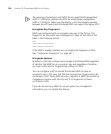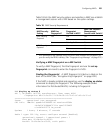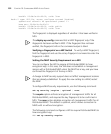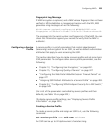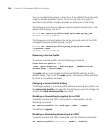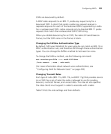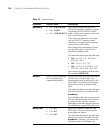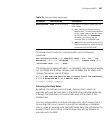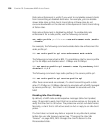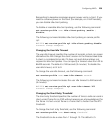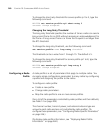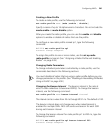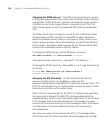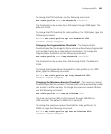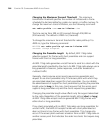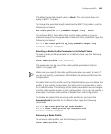238 CHAPTER 10: CONFIGURING MAP ACCESS POINTS
Data rate enforcement is useful if you want to completely prevent clients
from transmitting at disabled data rates. For example, you can disable
slower data rates so that clients transmitting at these rates do not
consume bandwidth on the channel at the expense of clients transmitting
at faster rates.
Data rate enforcement is disabled by default. To enable data rate
enforcement for a radio profile, use the following command:
set radio-profile profile-name rate-enforcement mode {enable
| disable}
For example, the following command enables data rate enforcement for
radio profile rp1.
WX# set radio-profile rp1 rate-enforcement mode enable
The following command sets a 802.11g mandatory rate for service profile
sp1 to 54 Mbps and disables rates 1.0 Mbps and 2.0 Mbps:
WX# set service-profile sp1 transmit-rates 11g mandatory 54.0
disabled 1.0,2.0
The following command maps radio profile rp1 to service profile sp1.
WX# set radio-profile rp1 service-profile sp1
After these commands are entered, if a client transmitting with a data
rate of 1.0 Mbps or 2.0 Mbps attempts to associate with a MAP managed
by service profile sp1, that client is not allowed to associate with the
MAP.
Disabling Idle-Client Probing
By default, a MAP radio sends keepalive messages (idle-client probes)
every 10 seconds to each client that has an active session on the radio, to
verify that the client is still active. The probes are unicast null-data frames.
Normally, a client that is still active sends an Ack in reply to an idle-client
probe.
If a client does not send any data or respond to any idle-client probes
before the user idle timeout expires (see “Changing the User Idle
Timeout” on page 239), MSS changes the client’s session to the
Disassociated state.



